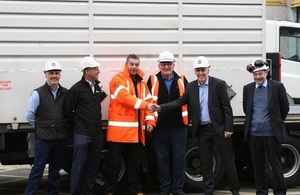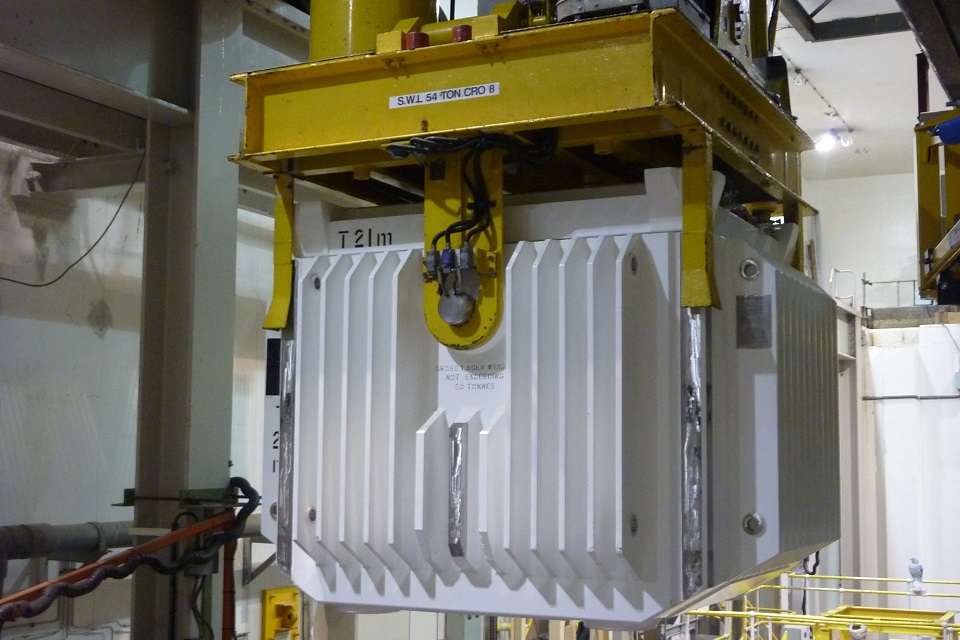Wylfa reactors 75% defuelled
Hazard reduction at Magnox鈥檚 Wylfa Site on Anglesey has reached a significant milestone, with three-quarters of the used nuclear fuel now emptied from its twin reactors.

Magnox Managing Director Tony Moore shaking Adrian Owen, Wylfa Transport Manager鈥檚, hand.
Wylfa site鈥檚 priority to remove fuel elements from the world鈥檚 most powerful Magnox reactors has progressively gained momentum throughout the year to achieve this new landmark. The fuel is transported to Sellafield in Cumbria for reprocessing.
Stuart Law, Site Director, said:
At the start of defuelling, the reactors contained almost 90,000 fuel elements. We鈥檙e now down to 33,800 and have achieved record performances of retrieving 1,000 fuel elements a week and shipping seven flasks in a week. This is down to the highly skilled team who are working round the clock to support the Nuclear Decommissioning Authority鈥檚 mission of safely cleaning up the legacy from the earliest days of the UK鈥檚 nuclear industry.
It takes 24 hours to fill a flask with approximately 150 used nuclear fuel elements. The flask is then cleaned in a huge washing machine and meticulous checks are made to ensure that it is safe and compliant for onward transportation to Sellafield. There are now less than 200 fuel flasks to go to end one of the UK鈥檚 largest programmes of nuclear and hazard reduction work.
Tim Dunham, Magnox Head of Nuclear Operations, stated:
The site is totally focused on achieving its mission to be fuel free in 2019. I鈥檓 so proud of how hard everyone has worked to achieve this.
Once the reactors are empty, and all the fuel elements have been dispatched to Sellafield, over 99 per cent of the site鈥檚 radiological hazard will have been removed. Following the completion of the defuelling and subsequent verification, the site will move into its Care and Maintenance preparations phase which focuses on de-planting buildings and retrieving, treating and processing any wastes.

Wylfa flask crane